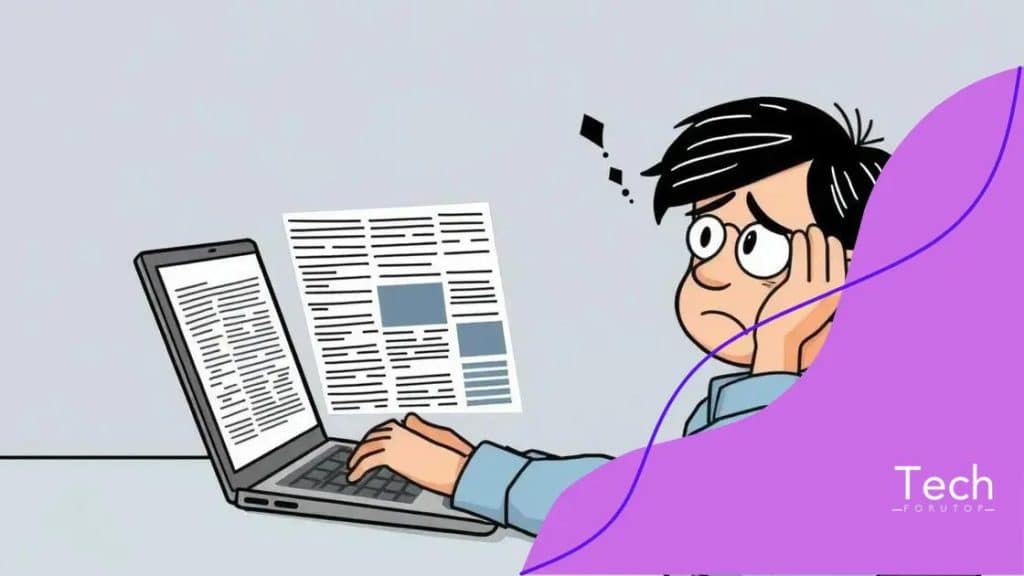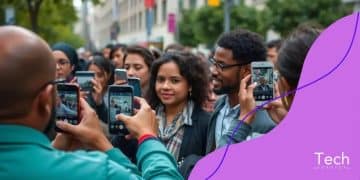Understanding fake news and how to spot it effectively

Understanding fake news involves recognizing its forms, such as misinformation and disinformation, critically evaluating sources, checking dates, and verifying claims to combat its spread effectively.
Understanding fake news and how to spot it is becoming more crucial than ever as we navigate an era where misinformation spreads rapidly. Have you ever come across a story that felt off? Let’s dive into how we can discern fact from fiction.
What is fake news?
Fake news refers to false or misleading information that is presented as if it were credible news. It can take many forms, including articles, videos, images, and more. Understanding what constitutes fake news is essential in today’s media landscape, where misinformation spreads rapidly.
Types of fake news include:
1. Satire and Parody
Some fake news stories are created as a form of humor. While they might be entertaining, they can also be mistaken for genuine news by those who do not recognize their intent.
2. Misleading Headlines
Often, headlines are exaggerated or twisted to attract clicks. Readers may share these stories without realizing the content is misleading.
3. Fabricated Content
Some articles are entirely made up, often intended to manipulate public opinion or generate a reaction. These are usually not based on any factual information.
4. Imposter Content
This involves legitimate sources being impersonated to create false narratives. For example, a fake website might mimic a real news outlet’s look.
The pernicious nature of fake news can distort public perception and sway opinions unfairly. It is often spread through social media platforms, where sensational stories can go viral in minutes.
Engaging with reliable sources is crucial. Fact-checking websites can help verify claims before sharing them. Additionally, being aware of one’s biases when consuming news can reduce the impact of fake news.
The impact of fake news on society
The impact of fake news on society is profound and far-reaching. It affects not just individuals but entire communities, often leading to misunderstandings and division. As false information spreads, it can create a false sense of reality, shaping people’s beliefs and actions.
Effects on Public Opinion
Fake news can sway public opinion significantly. When people consume inaccurate information, it can reinforce their existing biases. This results in a more polarized society where people are less likely to listen to opposing viewpoints.
Influence on Elections
During elections, the effects of fake news become particularly dangerous. Misinformation can lead voters to make decisions based on lies rather than truth. This manipulation can undermine the democratic process.
- False narratives can create confusion around candidates.
- Voter turnout can be affected by misleading information on voting procedures.
- Trust in media and institutions can erode significantly.
Moreover, the mental health of individuals can be impacted. Constant exposure to fake news can induce anxiety and fear, as people feel overwhelmed by the barrage of conflicting information. This stress can lead to a lack of trust in legitimate news sources, making it hard for people to discern what is accurate.
Furthermore, the sharing of fake news often perpetuates stereotypes and discrimination. When misinformation targets specific groups, it can reinforce negative perceptions and lead to social unrest. As attacks become common, society faces the risk of normalizing hate and division.
Identifying the signs of fake news

Identifying the signs of fake news is crucial for navigating today’s media landscape. With the rise of digital platforms, misinformation can spread rapidly. One of the first steps to discern fake news is to critically evaluate the information being presented.
Check the Source
The credibility of the source plays a significant role. Established news outlets typically adhere to journalistic standards. If an article comes from an unknown or questionable site, it is essential to approach the information with caution.
Examine the Headline
Clickbait headlines often exaggerate or misrepresent the content. If the headline seems overly sensational or outrageous, it might not reflect the truth.
- Look for emotional language that aims to provoke a reaction.
- Check if the headline aligns with the article’s content.
- Be wary of headlines that seem too good or too shocking to be true.
Additionally, examining the dates of the articles can reveal the relevance of the information. Old news can sometimes resurface, being shared as if it were recent, which can lead to misunderstandings.
Furthermore, pay attention to the quotes used within the article. If they come from anonymous sources or lack context, it may indicate a misleading narrative. Accurate journalism should provide clear and credible sources for significant claims.
Look for Evidence
Fake news often lacks supporting evidence. Reliable articles usually link to primary sources or studies. If an article makes bold claims without backing them up, it’s a warning sign. Additionally, consider whether the article discusses multiple viewpoints. Balanced reporting often includes various perspectives on a topic.
Tips for verifying information
Verifying information is essential in combatting fake news. With so much content online, knowing how to check facts will help you form a well-rounded view of any topic. Here are some practical tips to guide you.
1. Cross-check Sources
Always look for multiple sources reporting the same story. If various reliable outlets cover it, the information is more likely accurate. Be cautious with news that only appears on one site.
2. Utilize Fact-Checking Websites
Websites like Snopes, FactCheck.org, and PolitiFact specialize in verifying claims and articles. They scrutinize allegations and provide clear evidence about their validity.
- These sites can clarify rumors quickly.
- They often categorize information by political issues, making searches easier.
- You can see how often claims have been debunked.
Moreover, don’t just rely on headlines. Read the full articles to understand the context. Sometimes, headlines can be misleading by leaving out vital details that change the meaning of the story.
3. Check the Author
Look into the author’s background to see if they are credible. Authentic journalists usually have experience and accountability in the field. When you see bylines, a quick search can reveal their history and expertise.
4. Analyze the Evidence
Good articles provide supporting data, charts, or citations. If an article makes strong claims without any evidence, it might not be trustworthy. Always ask, “Where did this information come from?”
Being aware of your own biases is also crucial. When approaching news, it’s easy to accept information that aligns with your viewpoints without questioning it. Keeping an open mind can help in recognizing fake news.
The role of social media in spreading misinformation
The role of social media in spreading misinformation is significant and growing. With millions of users sharing content every day, false information can reach vast audiences in a matter of hours. Social media platforms allow anyone to post, share, and broadcast news, making it both a tool for communication and a potential source of confusion.
The Speed of Sharing
One of the main factors in misinformation spread is the speed at which content travels. A single post can go viral quicker than traditional news outlets can fact-check or respond. This rapid sharing often leads to misconceptions being accepted as facts before they can be corrected.
User-Generated Content
Another issue is that much of the content on social media is user-generated. Anyone can post information without verification. This leads to a mix of credible and non-credible posts existing side by side, which makes it hard for users to distinguish fact from fiction.
- Personal opinions are frequently presented as news.
- Influencers may share unchecked information with large followings.
- Groups may create echo chambers, reinforcing their beliefs with false information.
Moreover, algorithms on these platforms often prioritize engagement over accuracy. When outrageous or shocking content gets more likes and shares, it appears more frequently in feeds. This creates a cycle where misinformation is constantly amplified, while accurate information can be buried.
Lastly, the emotional impact of misinformation can have real-world consequences. False claims can stir panic, influence election outcomes, or even incite violence. It’s essential for users to be aware of these dynamics and take steps to verify information before sharing.
Conclusion: Understanding how to identify fake news and its impact on society is vital in today’s digital age. The spread of misinformation can shape opinions, create confusion, and lead to serious consequences. By being vigilant and verifying information, individuals can help combat fake news and contribute to a more informed society. Remember, social media plays a powerful role in how information circulates, so it’s essential to think critically about what we read and share. Stay informed, think critically, and help combat the spread of misinformation.
FAQ – Common Questions About Understanding Fake News
What is fake news?
Fake news refers to false or misleading information presented as factual news, often created to manipulate opinions.
How can I identify fake news?
You can identify fake news by checking the sources, examining the headlines, analyzing the evidence, and comparing multiple reports.
Why is social media significant in spreading misinformation?
Social media allows fast sharing of information, which can lead to misinformation spreading quicker than it can be fact-checked.
What steps can I take to verify information?
To verify information, cross-check sources, use fact-checkers, examine the author’s credibility, and look for supporting evidence.





